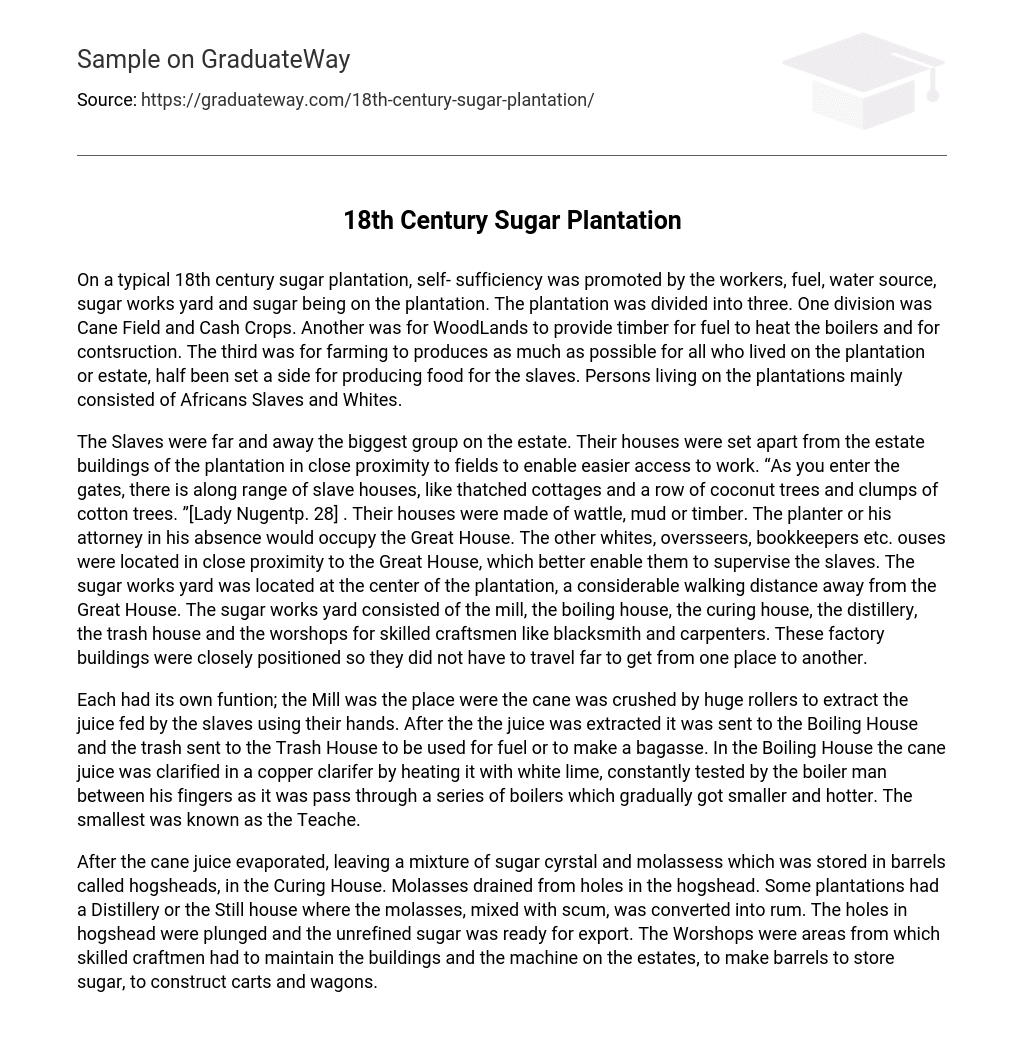In an 18th century sugar plantation, workers, fuel, water source, sugar works yard, and sugar were all located on the plantation to promote self-sufficiency. The plantation was divided into three sections. The first section was dedicated to the cultivation of cane fields and cash crops. The second section consisted of woodlands that provided timber for fuel and construction purposes. The third section was designated for farming, with the goal of producing enough food for everyone living on the plantation or estate, including a portion specifically for slaves. The residents of the plantation were primarily African slaves and white individuals.
The largest group on the estate was the Slaves. Their houses were separated from the plantation’s buildings and placed near the fields for convenient access to work. “As you enter the gates, there is a row of slave houses resembling thatched cottages, accompanied by coconut trees and clumps of cotton trees” [Lady Nugentp. 28]. These houses were constructed with wattle, mud, or timber. The planter or his attorney would reside in the Great House when absent. Other white individuals such as overseers and bookkeepers occupied houses in proximity to the Great House, allowing for easier supervision of the slaves. The sugar works yard, which included the mill, boiling house, curing house, distillery, trash house, and workshops for skilled craftsmen like blacksmiths and carpenters, was located centrally on the plantation but required a significant walk from the Great House. The close placement of these factory buildings reduced the need for extensive travel between them.
Each had a different function. The Mill was where the cane was crushed by large rollers to extract the juice, which was done by slaves using their hands. After the juice was extracted, it was sent to the Boiling House, while the waste was sent to the Trash House to be used as fuel or to make a bagasse. In the Boiling House, the cane juice was clarified in a copper clarifier by heating it with white lime. This process was constantly tested by the boiler man between his fingers as it passed through a series of boilers that gradually became smaller and hotter. The smallest boiler was called the Teache.
After the evaporation of cane juice, a combination of sugar crystals and molasses remained and was stored in barrels known as hogsheads in the Curing House. Molasses would then drain out of holes in the hogshead. Some plantations had a Distillery or Still house where the molasses, along with scum, was transformed into rum. The holes in the hogshead were sealed and the unrefined sugar was prepared for export. The Workshops served as areas where skilled craftsmen maintained the buildings and machinery on the estates, crafted barrels for storing sugar, and constructed carts and wagons.





